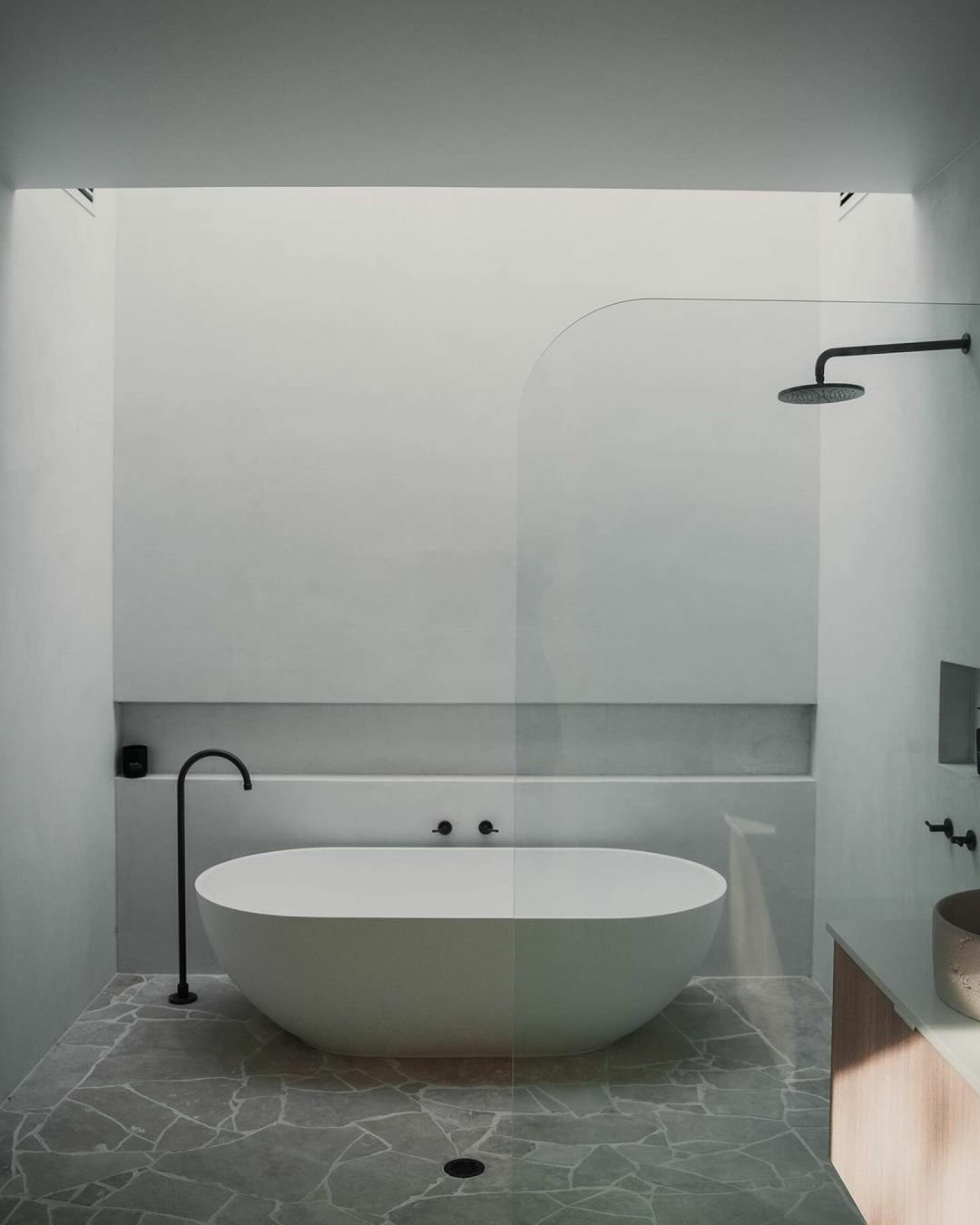Our Favourite Ideas for Minimalist Bathrooms
There’s no need for excessive decoration to create interesting spaces. Less really can be more when it comes to bathroom design, especially for minimalist looking for ways to de-clutter. By knowing how to combine simplicity, functionality, and intrigue, you can create a minimalist bathroom with plenty of ‘wow’ factor. Here are our favourite ideas for elevating minimalist bathrooms, giving you all the bathroom design inspiration you need for your next project.
Monochrome
Using a monochrome palette (focusing on just one hue) simplifies a space by eliminating visual distractions — which is a key principle in minimalism. With a single colour scheme, interest is created using textures and shapes. A monochrome base can be anything from all-white and neutrals to a vibrant green or pink on pink, so you can still enjoy a minimal design if bold colours are more your speed.
Seamless Surfaces
Sleek surface materials without grout or visible seams are often seen in beautiful minimalist bathrooms. The lack of ornamentation or excessive detailing creates a streamlined environment that focuses on function and form. This is why plenty of minimalists are opting for grout-free bathroom materials like microcement over traditional tiles. Bonus: fewer grout lines mean fewer places for dirt, mould, or mildew to accumulate, keeping the minimalist look intact with less effort. Below are X-Bond Microcement bathroom projects.
Contrasting Fixtures & Accessories
When everything in a bathroom is in similar tones or materials, it can feel boring if you’re not playing with texture or shape. So, try adding some excitement via contrasting fixtures and accessories. Matte black tapware on light walls, a vibrant Missoni towel, old fashioned brass against contemporary surfaces… Have fun with it.
Floating Vanities
Need ways to eliminate the bulk of traditional cabinets and storage? A floating vanity is perfect; freeing up floor space, your bathroom feels so much less cluttered.
Recessed Shelving
Built-in storage solutions, such as recessed shelves in the shower, help keep surfaces clutter-free. These unobtrusive storage spaces keep the essentials close but out of sight. It looks even better when the recess is finished in the exact same surface material as the rest of the wall, to blend in further (microcement is a great option for this).
Frameless Glass Shower
The key to minimalist bathrooms is removing unnecessary details. Your shower screen doesn’t need a frame. A simple glass pane minimises visual barriers and keeps the design feeling simple. It also helps smaller bathrooms feel more spacious by allowing light to flow freely for a greater sense of openness. If you want to add an extra layer of depth, fluted textures or frosted glass are your best friend.
Neutrals
When people think of minimalism, traditionally neutral colours come to mind — white and beige especially. This is because they’re usually associated with creating a calm and soothing atmosphere, often the goal for minimalists (and bathrooms).
Wall-Mounted Taps
To enhance your minimalist approach, go for wall-mounted faucets. These are a sleek, space-saving solution to de-clutter your countertops, allowing for a cleaner and less busy sink area.
Natural Materials
Minimalist spaces can sometimes feel a bit cold and sterile, if you aren’t careful. Incorporating natural materials like wood or stone adds warmth to even the most sparsely decorated bathroom. Organic textures will keep the space from feeling too sterile while still suiting a pared-down aesthetic.
Recessed Lighting
If you’re wondering how to choose lighting for a minimal design, consider hiding it. Recessed lighting eliminates the need for bulky fixtures, and can also help accentuate the beauty of minimalist features, turning them into visual focal points. Add dimmer switches to create different moods (we suggest choosing warm lighting for those peaceful self-care sessions).
Statement Pieces
Sometimes, all you need is one bold element to tie a minimalist bathroom together. Whether it’s a sculptural light fixture, incredible marble, or something else that creates striking contrast; a single statement piece in an otherwise austere room can prevent the design from feeling flat or two-dimensional.
This article mentions microcement. If you’re interested in using microcement in your project in Australia, we’d be happy to help.



















